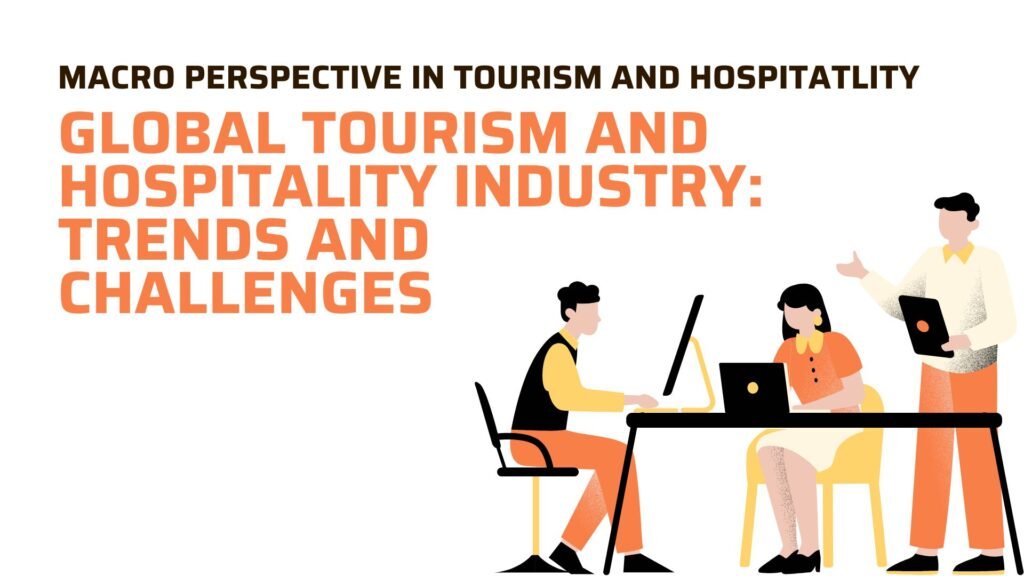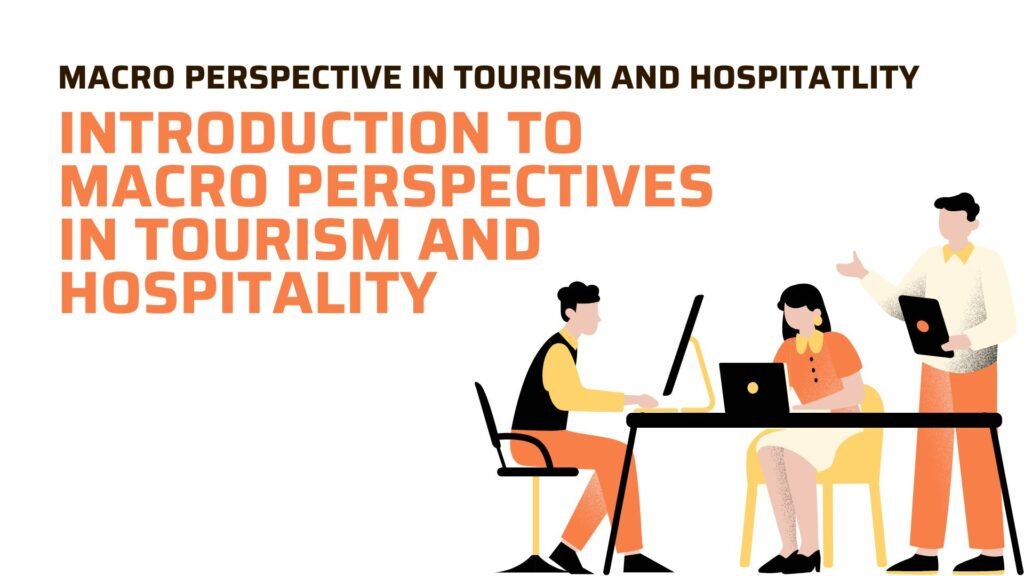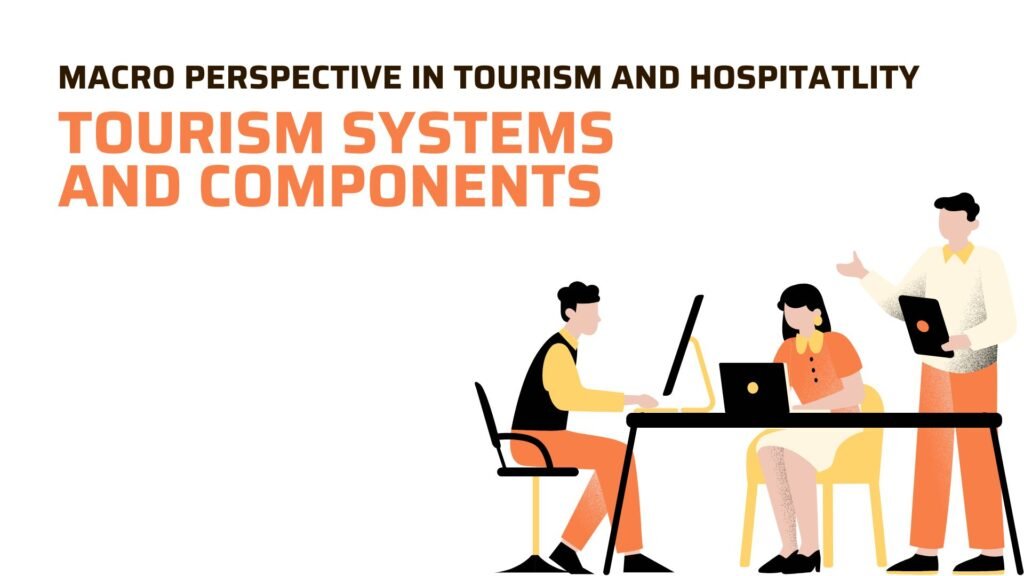
The tourism and hospitality industries operate in a dynamic global environment, shaped by rapidly evolving trends, technological advancements, and complex challenges. These industries not only respond to external global forces but also influence economic, social, and environmental trajectories. This lesson explores the transformative trends, innovations, and challenges shaping the global tourism and hospitality landscape, with a focus on digital transformation, demographic shifts, sustainability, and geopolitical influences.
Global Trends in Tourism and Hospitality
1. Digital Transformation
Technological advancements are revolutionizing the tourism and hospitality sectors by enhancing operational efficiency, personalization, and customer experience:
- Smart Tourism Ecosystems: The integration of technologies such as the Internet of Things (IoT), artificial intelligence (AI), big data analytics, and blockchain is enabling seamless travel experiences. For example, IoT-connected hotel rooms offer automated lighting, climate control, and personalized settings based on guest preferences.
- Online Platforms: Booking platforms like Expedia, Airbnb, and Booking.com have made travel planning more accessible, offering price comparisons, reviews, and dynamic recommendations.
- Contactless Services: Post-pandemic, contactless technologies such as mobile check-ins, QR-code menus, and digital payments have become industry staples, ensuring safety and convenience.
- Virtual and Augmented Reality (VR/AR): VR allows travelers to “preview” destinations or accommodations, while AR enhances experiences at cultural sites and attractions by providing interactive information.
Example: Marriott International employs AI-driven chatbots to handle customer inquiries, while airlines like Emirates use AR for baggage policy visualization.
Challenge: The digital divide can exclude technologically underserved regions or demographics, limiting equitable access to these innovations.
2. Demographic Shifts
Changing demographics are reshaping demand patterns and service expectations in tourism and hospitality:
- Millennials and Gen Z Travelers: These groups prioritize experiential travel, preferring immersive cultural activities, adventure tourism, and wellness experiences. They also value eco-friendly and socially responsible tourism providers.
- Aging Populations: In regions with older demographics, such as Europe and Japan, there is a growing demand for accessible travel options, including mobility-friendly accommodations and senior-oriented tours.
- Rise of Middle-Class Travelers: The economic growth of countries like China and India has expanded the global middle class, leading to a surge in outbound tourism from these regions.
Example: The cruise industry is tailoring offerings to multigenerational families, combining adventurous excursions for younger travelers with relaxed, senior-friendly amenities.
Challenge: Catering to diverse demographics requires businesses to balance traditional offerings with innovative, niche-market strategies.
3. Sustainability
Sustainability is at the forefront of tourism and hospitality due to rising environmental concerns and shifting consumer preferences:
- Eco-Tourism Growth: Tourists are increasingly seeking eco-friendly accommodations and activities, prompting businesses to adopt green practices such as waste reduction, renewable energy use, and sustainable sourcing.
- Carbon Neutrality Initiatives: Airlines and hotels are implementing carbon offset programs to mitigate environmental impacts. For instance, some airlines allow passengers to offset their carbon footprints when booking flights.
- Circular Economy Practices: Hospitality businesses are incorporating circular economy principles, such as reducing single-use plastics, recycling, and reusing resources.
Example: Six Senses Resorts has pioneered sustainable luxury tourism by combining eco-conscious architecture with community engagement, ensuring minimal environmental impact.
Challenge: Achieving sustainability goals often involves high upfront costs and complex logistical adjustments, which can deter smaller operators from adopting such practices.
4. Geopolitical Influences
Tourism and hospitality are highly sensitive to geopolitical factors, which can either stimulate or hinder growth:
- Political Stability: Destinations with stable governance attract more tourists, while regions affected by political unrest or conflict experience declines in visitor numbers.
- Travel Restrictions: Visa policies, border controls, and public health requirements (e.g., during the COVID-19 pandemic) significantly influence travel patterns.
- Economic Policies: Exchange rate fluctuations and taxation policies impact affordability and competitiveness in global tourism markets.
- Global Events: Mega-events such as the Olympics and World Expos serve as catalysts for tourism growth, often leading to long-term infrastructural and economic benefits.
Example: The United Arab Emirates (UAE) strategically leveraged Expo 2020 to boost tourism, showcasing its cultural and economic potential on a global stage.
Challenge: Geopolitical crises, such as the Russia-Ukraine conflict, can disrupt travel corridors, supply chains, and market stability.
Challenges Facing the Global Tourism and Hospitality Industry
While the tourism and hospitality industries are poised for growth due to evolving trends and increased global mobility, they face numerous challenges that threaten their sustainability and profitability. These challenges stem from a mix of internal operational issues and external global forces, each requiring strategic and collaborative solutions.
1. Over-Tourism
Over-tourism occurs when the number of visitors to a destination exceeds the area’s capacity to manage them sustainably. It results in significant negative impacts:
- Strain on Local Infrastructure: Popular destinations such as Venice, Italy, experience overwhelmed public transport, congested streets, and overburdened utilities. This diminishes the quality of life for residents and the experience for tourists.
- Ecosystem Disruption: Natural attractions, such as coral reefs in Thailand or trails in Machu Picchu, Peru, face degradation due to excessive human activity. For instance, Maya Bay in Thailand was temporarily closed to allow its ecosystem to recover from over-tourism.
- Cultural Dilution: Excessive commercialization to cater to tourists can erode the authenticity of local traditions and cultures.
Management Strategies:
- Visitor Caps: Machu Picchu limits daily visitor numbers and requires advance reservations to reduce foot traffic.
- Diversifying Tourist Attractions: Governments and businesses promote lesser-known destinations to distribute tourist activity more evenly.
2. Workforce Shortages
Labor shortages in the tourism and hospitality industries are a growing concern, particularly post-pandemic:
- Service Quality Impact: Reduced staff availability has led to longer wait times, decreased attention to customer needs, and diminished overall service quality.
- Reliance on Automation: Many businesses have turned to automated check-ins, chatbots, and robot servers as stop-gap measures, potentially compromising the human-centric experience the industry thrives on.
- Rising Labor Costs: To attract talent in a competitive market, businesses have had to increase wages and offer better benefits, adding pressure to operational budgets.
Example: In the United States, many restaurants and hotels struggle to fill roles, prompting initiatives like offering flexible schedules or partnering with vocational training programs.
Long-Term Implications: Persistent shortages could lead to higher costs for consumers and push smaller businesses to close due to inability to compete.
3. Health and Safety Concerns
The COVID-19 pandemic significantly altered health and safety expectations in tourism and hospitality:
- Enhanced Sanitation Protocols: Hotels, airlines, and restaurants now implement rigorous cleaning measures, from sanitizing surfaces to installing air filtration systems.
- Touchless Services: Many businesses adopted contactless check-ins, digital payments, and online reservations to reduce physical interaction.
- Crisis Management: The pandemic exposed gaps in crisis preparedness. Businesses now prioritize contingency plans to address future health crises.
Example: Major hotel chains like Hilton and Marriott have rolled out standardized hygiene programs, such as Hilton CleanStay, to reassure guests.
Ongoing Challenges: Maintaining these elevated health and safety standards requires continuous investment, training, and compliance, which may strain smaller operators.
4. Economic Uncertainty
Economic instability affects both the demand and supply sides of tourism and hospitality:
- Rising Operational Costs: Fluctuating fuel prices directly impact transportation costs, while inflation drives up the prices of food, labor, and materials.
- Reduced Consumer Spending: Economic downturns lead to reduced disposable income, discouraging discretionary spending on travel and leisure.
- Currency Volatility: Exchange rate fluctuations can make certain destinations less attractive to international travelers.
Example: The airline industry, heavily dependent on fuel, faces constant pressure to adjust ticket prices during periods of rising oil costs, which can deter budget-conscious travelers.
Adaptation Strategies:
- Offering dynamic pricing to maximize revenues during peak demand.
- Introducing cost-effective packages to attract budget travelers.
5. Technological Integration
While technology has revolutionized the tourism and hospitality industries, its adoption poses several challenges:
- High Implementation Costs: Installing systems such as AI-driven reservation platforms, IoT-enabled smart rooms, or VR experiences requires significant capital investment.
- Training and Skills Development: Employees need to be trained to operate and manage these technologies effectively, which involves time and resources.
- Cybersecurity Threats: As digital transactions and customer data collection increase, businesses face higher risks of data breaches, threatening customer trust.
Example: British Airways faced a major cybersecurity breach in 2018, exposing the data of 380,000 customers. Such incidents highlight the vulnerabilities associated with technological integration.
Future Outlook: Businesses must strike a balance between adopting cutting-edge technology and ensuring robust data protection and employee training.
Conclusion
The global tourism and hospitality industry operates at the intersection of transformative trends and complex challenges. Digital transformation is enhancing customer experiences, while demographic shifts and sustainability are redefining market priorities. However, geopolitical influences and operational challenges demand adaptive strategies and collaborative efforts. By leveraging innovations and addressing these challenges proactively, the industry can continue to thrive as a cornerstone of global economic and social development. This understanding equips stakeholders to navigate an evolving landscape with resilience and foresight.


Hey gamers, wanted to share my experience with lc88win. I’ve been playing here for a bit and the payouts have been legit. Plus, the variety of games keeps things interesting. Check them out at lc88win.
Alright, check out go8game. If you like online games, its a perfect fit. Fair play and pretty easy to use so I’ll be using it again. go8game
Fubetcassino, hey there! Just swinging by to say, the site looks slick and the games are definitely keeping me entertained. Could use a few more bonus offers, though, you know? 😉 Check it out yourself: fubetcassino
Yo, 9dgamebet, just checked you out. Interface is slick! Fingers crossed for some big wins tonight. Hope the odds are good for us! Check it out here: 9dgamebet